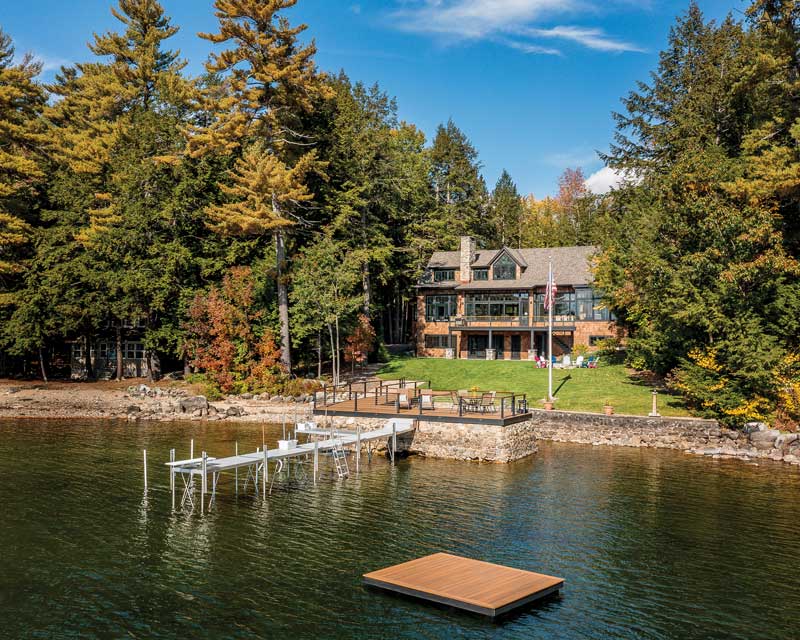
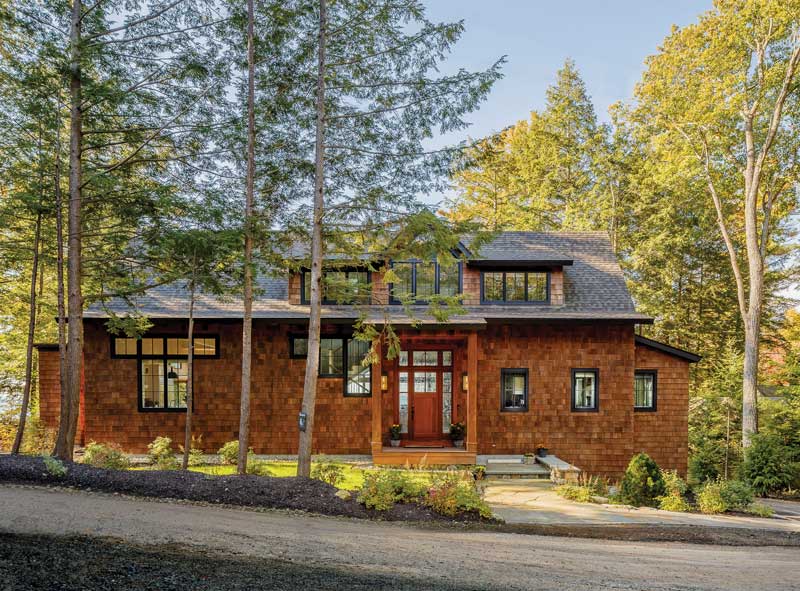
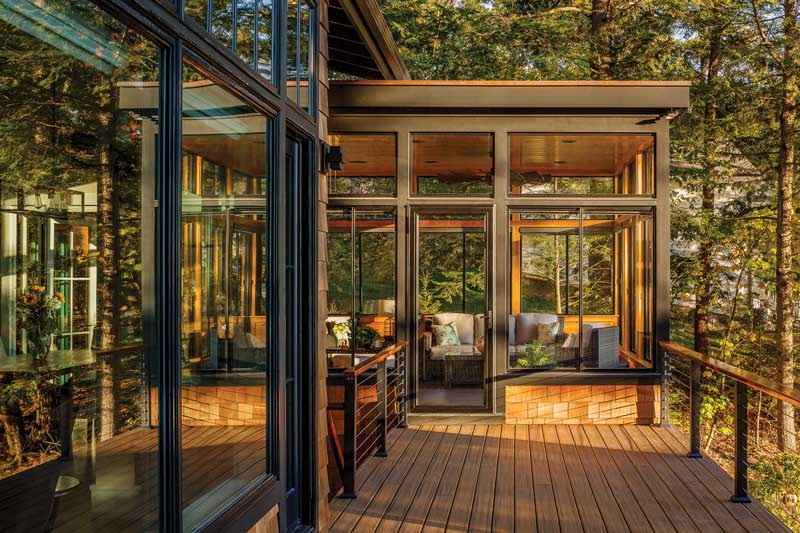
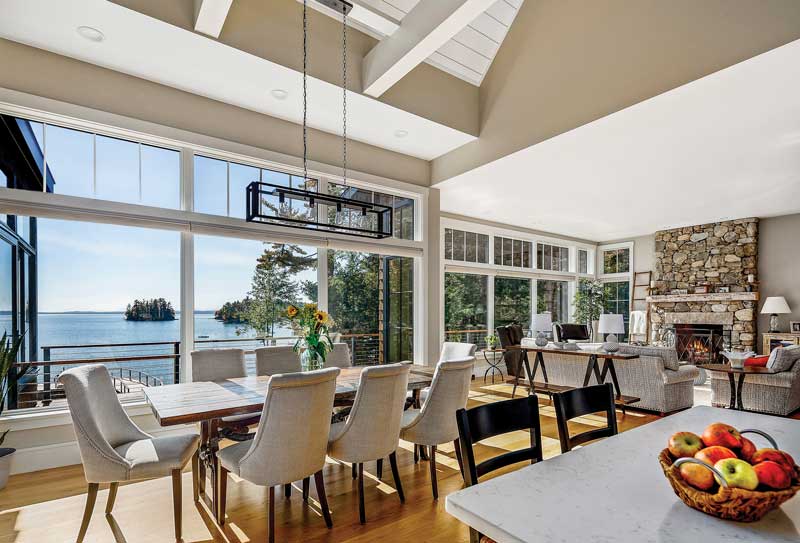
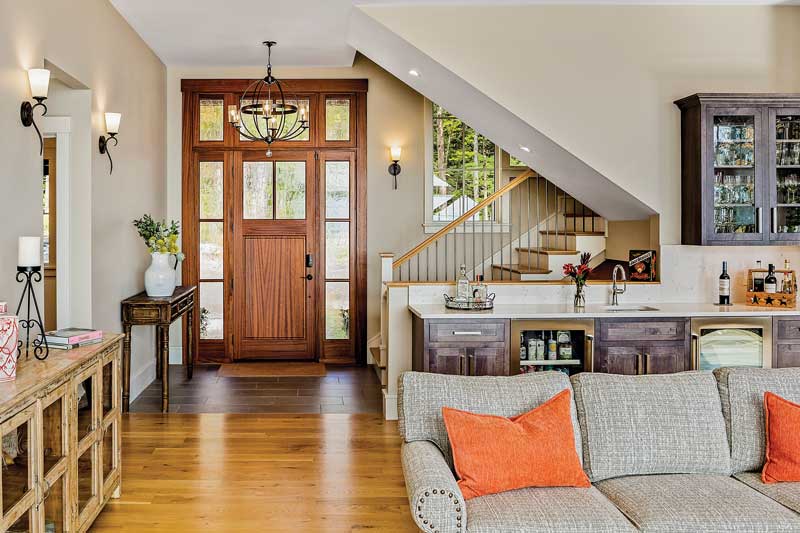

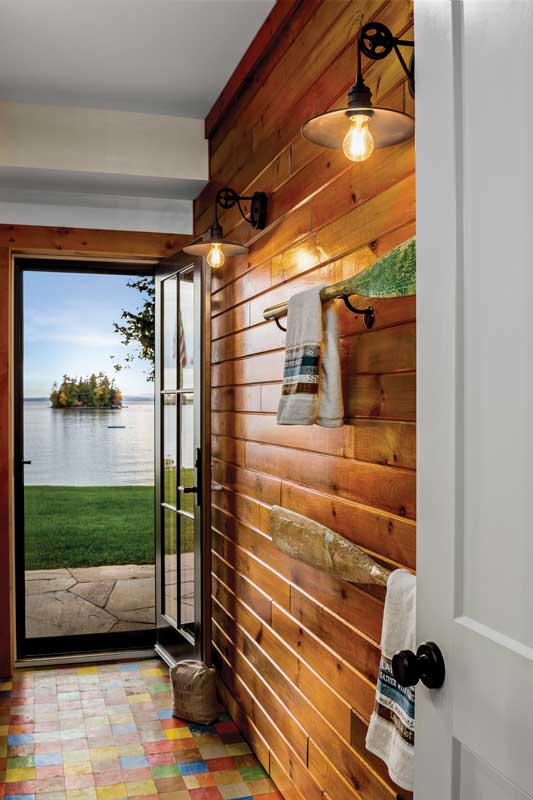
Photos by Sarah Szwajkos
The result is a new lake-front house with a classic, Adirondack look; a five-bedroom and five-bath home with spectacular views, high ceilings, a fully equipped kitchen, and plenty of space for entertaining. A pet peeve of the Valentines when visiting other houses was seeing that they all had the same bathroom fixtures. In this house each bathroom has unique faucets, sinks, and toilets. The Valentines also took special care with the kitchen.
“My wife is Sicilian and likes to cook and entertain,” Ron Valentine said. “The kitchen has plenty of space, and we have a pizza oven on the screen porch.”
That porch, which is separated from the kitchen by a 9-foot folding door and has removable windows, has a flat roof, leaving room on the gable end of the kitchen’s cathedral ceiling for windows that, combined with transom windows over the cabinets, fill the space with light.
The main entrance and living spaces, including the kitchen, living room and dining area, and the master bedroom, are on the second floor. There are two guestrooms and bathrooms on the top floor. The walk-in basement includes two bunk rooms, and a hangout space with games and a bar area. Underneath the screen porch is a utility space with room to store kayaks and other equipment.
A big granite fireplace anchors the living room and there is another fireplace in the walk-out basement, which can be separated from the upper floors so if the Valentines’ grown sons want to come up in the winter, they can just use the first floor.
The house is heated with a conventional propane-fired hydro-air system, with radiant floor heat.
The camp was on the site of a former marina and has an impressive fieldstone dock that goes out 50 feet and then curves left in a wide “L” shape. A deck and rails were added to the dock as part of the new construction project.
And, in a nice touch, the old building lives on in various parts that were saved and re-used.
Reclaimed wood was used to build a vanity in the basement bathroom, and vintage multi-colored 2-inch Linoleum tiles were saved and reinstalled exactly as they had looked in the original camp.
The Valentines are thrilled with their new lakeside retreat, which they now can use year-round.
“We plan to retire there,” said Ron Valentine.
Polly Saltonstall is editor of this magazine.






